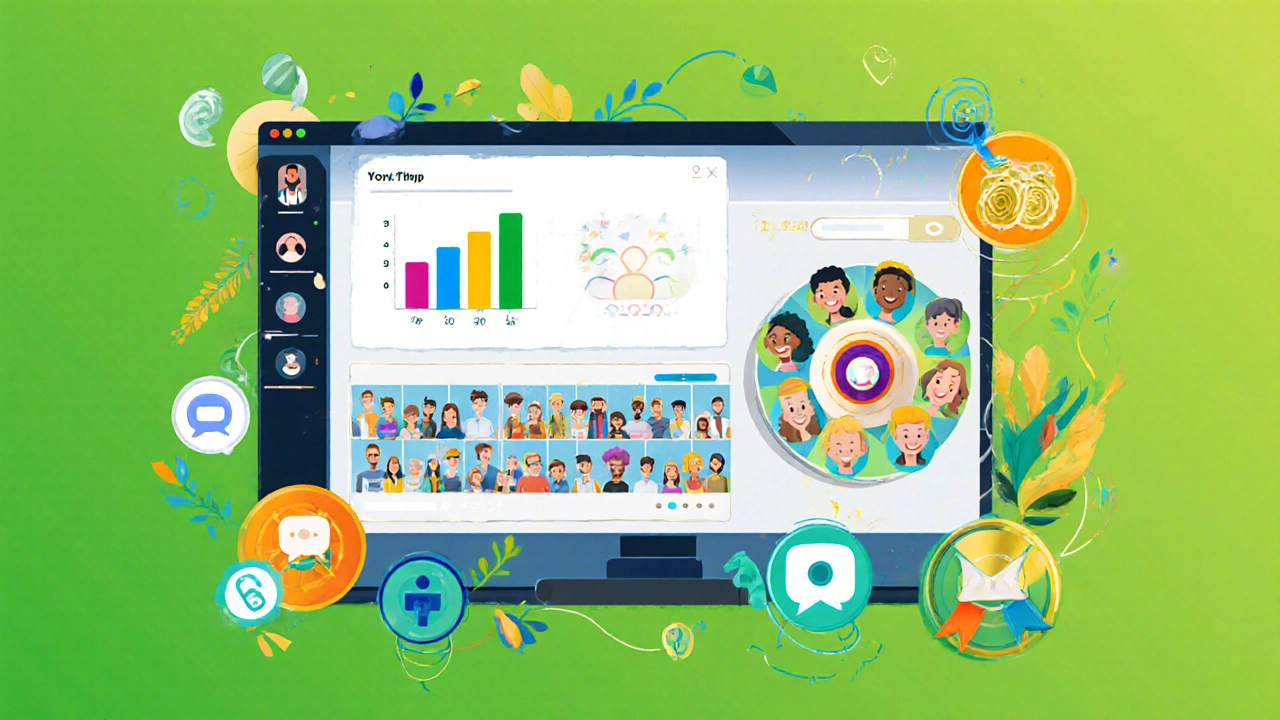E-Learning Challenge Impact Calculator
Impact Analysis Results
Based on your inputs, learner engagement has the most significant negative impact on completion rates. Addressing engagement issues could potentially improve overall course completion by up to 27%.
When schools and companies rushed to digital classrooms, a loud debate followed: biggest problem with e‑learning isn’t the tech, it’s the people behind the screens. Below we untangle the most common complaints, rank them, and point out which one truly stalls progress.
Key Takeaways
- Learner engagement and interaction consistently top the list of e‑learning pain points.
- Access issues (digital divide) and assessment integrity are close runners‑up.
- Effective solutions blend pedagogy, tech, and human presence.
What is e‑learning?
E‑learning is a mode of education delivered via digital platforms, allowing learners to access content, interact with instructors, and complete assessments online. It grew from simple PDFs to immersive experiences with video, quizzes, and AI‑driven feedback.
Why Do We Keep Asking About the Biggest Problem?
Every stakeholder-students, teachers, administrators, employers-faces a different friction point. Knowing the most damaging issue helps institutions prioritize budgets, redesign courses, and choose the right tech stack.
Major Challenges at a Glance
Below is a quick snapshot of the four heavyweight issues that dominate the conversation:
- Learner engagement and interaction
- The digital divide (unequal access to devices and bandwidth)
- Assessment integrity (cheating, authenticity)
- Student motivation and self‑regulation

1. Learner Engagement and Interaction
Engagement is the engine that keeps knowledge moving. In a physical classroom, teachers read body language, spark spontaneous debates, and adjust pace on the fly. Online, that feedback loop weakens.
Research from the 2024 EDU‑Tech Consortium shows that courses with active discussion forums see a 27% higher completion rate than lecture‑only formats. The missing piece is a sense of community.
Key attributes of poor engagement include low forum posting rates, high dropout percentages, and stale video view counts. When learners feel isolated, they disengage, leading to lower grades and higher attrition.
2. The Digital Divide
The digital divide describes the gap between those who have reliable internet, up‑to‑date devices, and digital literacy, and those who don’t. In 2023, the Australian Bureau of Statistics reported that 12% of households in regional areas still lack broadband speeds above 10Mbps-insufficient for high‑definition streaming.
Without equitable access, e‑learning can widen existing achievement gaps. Students on slow connections miss live sessions, struggle with download‑heavy resources, and fall behind peers with better bandwidth.
3. Assessment Integrity
When exams move online, ensuring that the work is truly the learner’s becomes tricky. Assessment integrity issues include plagiarism, contract cheating, and the use of unauthorized digital tools.
A 2022 study by the International Society for Technology in Education found that 34% of online course instructors reported at least one cheating incident per semester. Weak proctoring, open‑book formats, and lack of randomization increase vulnerability.
4. Motivation and Self‑Regulation
Online learning demands a higher degree of self‑discipline. Without the structure of a campus schedule, many learners procrastinate. Student motivation dips when goals feel abstract and feedback is delayed.
Evidence from a 2025 meta‑analysis of 45 MOOCs shows that weekly goal‑setting and micro‑certifications boost persistence by 19%.
5. Instructional Design and LMS Limitations
Even the best content can flounder in a clunky learning management system (LMS). Poor navigation, lack of mobile optimization, and limited analytics prevent teachers from spotting struggling learners.
When the platform itself becomes a barrier, engagement suffers regardless of instructional quality.

Which Issue Is the Biggest?
All four challenges intertwine, but data points to engagement as the primary choke point. A 2024 global survey of 8,000 online learners ranked “feeling disconnected from peers and instructors” as the top reason for dropping a course, ahead of access or cheating concerns.
Why does engagement outrank the others?
- It directly influences motivation-students who interact are more likely to stay on track.
- Effective engagement can mitigate the digital divide; interactive content often works on lower‑bandwidth devices.
- When learners are actively involved, assessment integrity improves because they internalize material rather than seeking shortcuts.
In short, if you solve the engagement problem, the other three shrink as well.
Practical Steps to Boost Engagement
- Insert live, low‑stakes activities: polls, breakout rooms, and quick quizzes keep attention high.
- Use social presence techniques-personal video introductions, instructor office‑hours, and discussion prompts that require personal reflection.
- Leverage gamification: badges, leaderboards, and progress bars turn abstract goals into visible achievements.
- Provide multimodal content (short videos, podcasts, infographics) so learners can choose the format that works best with their bandwidth.
- Deploy analytics dashboards that alert instructors when a learner hasn’t posted or watched a video in 48hours.
Comparison of the Top Four Problems
| Problem | Impact on Completion Rate | Ease of Technical Fix | Typical Mitigation Cost (AU$) |
|---|---|---|---|
| Learner engagement | ‑27% (when low) | Medium - needs pedagogical redesign | 5,000‑20,000 |
| Digital divide | ‑15% (in underserved regions) | Hard - infrastructure dependent | 20,000‑100,000 |
| Assessment integrity | ‑10% (cheating spikes) | Easy - proctoring tools | 2,000‑8,000 |
| Student motivation | ‑12% (high procrastination) | Medium - coaching & gamification | 3,000‑12,000 |
Quick Checklist for Educators
- Audit your LMS for mobile friendliness.
- Schedule at least one live interaction per week.
- Map each module to a tangible outcome (badge, certificate).
- Survey learners about bandwidth needs and adapt content size.
- Implement a plagiarism‑detecting tool and randomize quiz pools.
Frequently Asked Questions
Is engagement really more important than reliable internet?
Yes. Even students with perfect bandwidth can drop out if they feel isolated. Engaging activities create a sense of belonging that keeps learners logged in long after the connection is stable.
What low‑cost tools boost interaction?
Free platforms like Kahoot!, Padlet, and Google Meet breakout rooms let instructors sprinkle live polls, collaborative boards, and small‑group chats into any course without big budgets.
How can I measure engagement effectively?
Track metrics such as average video watch time, forum post count, quiz attempt frequency, and login streaks. Combine them into an engagement index that flags learners who dip below a preset threshold.
Do proctoring tools solve assessment integrity?
They reduce easy cheating but aren’t foolproof. Pairing proctoring with open‑book design, random question pools, and timed assessments creates layered security.
What’s a realistic budget for fixing engagement?
Institutions can start with a $5,000‑$10,000 package: a modest LMS upgrade, subscription to a gamification tool, and faculty training on interactive pedagogy. Scale up as results improve.
By putting learner interaction at the top of the priority list, educators can turn e‑learning from a stop‑gap solution into a thriving, inclusive environment.






Write a comment: